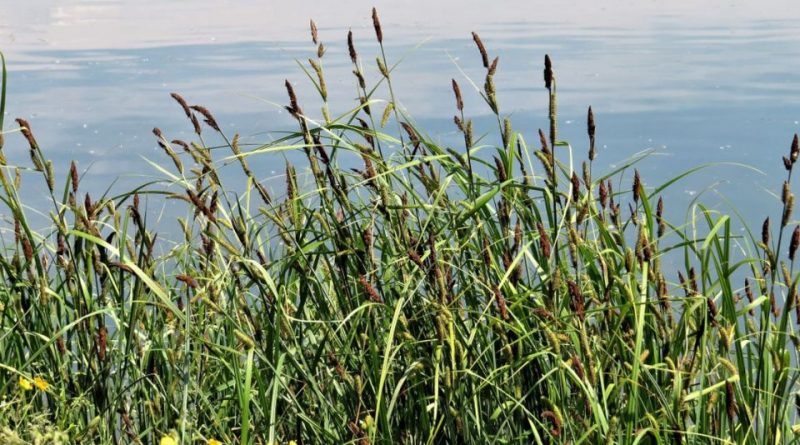Carex riparia
Carex riparia
The greater pond sedge (Carex riparia Curtis, 1783) is a marsh species belonging to the Cyperaceae family.
Systematic –
From a systematic point of view, it belongs to the Eukaryota Domain, Plantae Kingdom, Magnoliophyta Division, Liliopsida Class, Cyperales Order, Cyperaceae Family and therefore to the Genus Carex and the Species C. riparia.
Etymology –
The term Carex comes from the classical Latin name cārex, caricis carice (in Virgil), derived from the Greek κείρω keíro io cut, reference to the cutting edge of many species of this genus.
The specific epithet riparia comes from ripa riva, bank: which grows near the banks of the waterways.
Geographical Distribution and Habitat –
The greater pond sedge is a species with a wide Eurasian distribution, with sporadic areas in North Africa. In Italy it is present in almost all regions.
Its habitat is represented by humid places where it grows on the banks of canals and streams and on the banks of ponds and ponds, below the mountain belt.
This species can form large agglomerations along slow-flowing rivers, canals, lakesides and wet forests. It can be the dominant species in the marshes, especially if there is stagnant water in spring, and it is also found in the presence of tall grasses, alongside Carex acutiformis, Carex acuta and other similar species.
Description –
Carex riparia is an erect, compact and rhizomatous perennial species.
The stems have a triangular section of dark gray-green color.
It has linear, green colored leaves, 6 – 15 mm wide and even one meter long. In the spring period it produces innumerable apical inflorescences, formed by 2-3 upper male ears, from 2 to 4 cm long and 3-4 lower female ears from 3 to 7 cm long in brown color.
Flowering period runs from April to June.
Cultivation –
Carex riparia is a marsh grass that is used in phytodepuration plants.
It can also be used as an ornamental plant on the banks of ponds or on the banks of rivers and streams, on soil that is always moist or covered with up to 20 cm of water in full sun or partial shade on soil with a neutral or slightly basic pH; it is a slightly calcium-loving plant.
The recommended planting depth between the rhizome and the surface of the water ranges from 0 to -30 cm.
In development there will be a height of the plant above the water level of about 120 cm.
We also recommend choosing exposure in full sun or partial shade.
The plant has good resistance to very harsh temperatures (down to -30 ° C).
The recommended planting density is 5 plants per m2.
Uses and Traditions –
This species tends to hybridize, where present, with other Carex species, including the closely related Carex acutiformis (minor pond sedge).
A variegated cultivar is grown as an ornamental herb.
No food or pharmaceutical uses are known.
Preparation method –
There are no known food or therapeutic uses of the sedge.
Guido Bissanti
Sources
– Acta Plantarum – Flora of the Italian Regions.
– Wikipedia, the free encyclopedia.
– Treben M., 2000. Health from the Lord’s Pharmacy, Tips and experiences with medicinal herbs, Ennsthaler Editore
– Pignatti S., 1982. Flora of Italy, Edagricole, Bologna.
– Conti F., Abbate G., Alessandrini A., Blasi C. (edited by), 2005. An annotated checklist of the Italian vascular flora, Palombi Editore.
Warning: Pharmaceutical applications and alimurgical uses are indicated for information purposes only, they do not in any way represent a medical prescription; therefore, no responsibility is accepted for their use for healing, aesthetic or food purposes.


